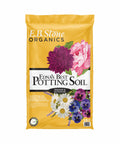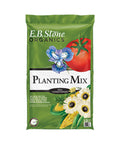Details
Pansies are an herbaceous annual with a mounded form. Its relatively fine texture sets it apart from other garden plants with less refined foliage.
This plant will require occasional maintenance and upkeep, and should only be pruned after flowering to avoid removing any of the current season's flowers. Gardeners should be aware of the following characteristic(s) that may warrant special consideration:
- Self-Seeding
- Mass Planting
- Border Edging
- General Garden Use
- Container Planting
- Hanging Baskets
Features
Pansies have masses of beautiful flowers at the ends of the stems from early fall to late spring, which are most effective when planted in groupings. Its serrated round leaves remain dark green in color throughout the season.
Care
Planting & Growing
Pansies will grow to be only 6 inches tall at maturity extending to 8 inches tall with the flowers, with a spread of 10 inches. When grown in masses or used as a bedding plant, individual plants should be spaced approximately 8 to 10 inches apart. It grows at a fast rate, and is generally grown as a cool season/winter annual
This plant does best in full sun to partial shade. It prefers to grow in average to moist conditions, and shouldn't be allowed to dry out. It is not particular as to soil type or pH. It is highly tolerant of urban pollution and will even thrive in inner city environments. Consider covering it with a thick layer of mulch in winter to protect it in exposed locations or colder microclimates. This particular variety is an interspecific hybrid.
Pansies are a fine choice for the garden, but it is also a good selection for planting in outdoor containers. Because of its compact bushy habit of growth, it is ideally suited for use as a 'filler' in the 'spiller-thriller-filler' container combination; plant it where it can fill out the space between the thriller and spilller. Note that when growing plants in outdoor containers and baskets, they may require more frequent waterings than they would in the yard or garden.





































